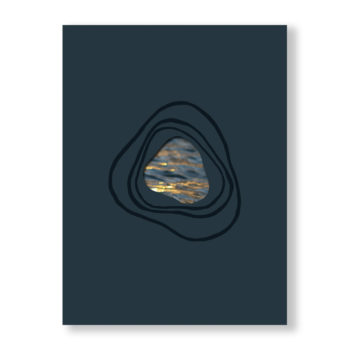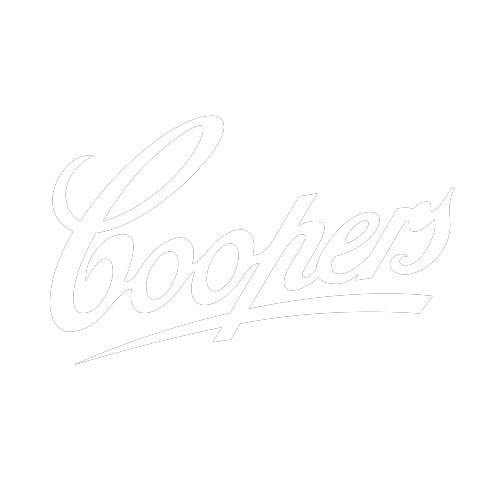Long Water
Fibre Stories
5 September–19 December 20205 Sep–19 Dec 2020
#longwater
Long Water: Fibre Stories illuminates spiritual, ancestral, and physical connections to water through fibre practices by artists from Yuwaalaraay (North-West New South Wales), Quandamooka (Moreton Bay, South-East Queensland), Kuku Yalanji (Far-North Queensland), Zenadh Kes (Torres Strait Islands, Queensland), Yurruwi (Milingimbi Island, Norther Territory), and surrounding homelands. Together this group—Aboriginal and Torres Strait Islander women, of different generations and ancestries—share an inseparable relationship to water, be it vast sea, inland waterway, or expansive river system.
Water places have always been a wellspring of vitality, knowledge, and connection, yet these sites also resonate with the experiences of colonisation, difficult histories, and pressing environmental concerns. Fibre work communicates a strong sense of history, place, and knowing, found in its meanings, materials, and production processes. In Long Water, artists embed the links between water and weaving in intricate forms, layered prints, and spirited installations guided by ancestral memory and grounded in personal interpretation.
Long Water celebrates stories of regeneration, the continuation of important cultural traditions, and the strong women and vital water places that sustain them. The country—and the wide range of environments, practices, and knowledges represented—speak to both deep time and contemporary experience, asserting the importance of water to our cultural health and capacity for resilience.
This exhibition has been developed through relationships with artists and communities, particularly the Milingimbi Art and Culture Centre and Moa Arts.
Download the education resource here.
-
Long Water has been assisted by the Australian Government through the Australia Council, its arts funding and advisory body, the Australian Government’s Visions of Australia program, and String Harvest. Long Water is generously supported by IMA Trailblazers.
Artists
Curated By
- Freja Carmichael
Off-Site Venues
- Milingimbi Art and Culture Centre
Milingimbi, NT01 May–15 May 2021Northsite Contemporary Arts
Cairns, Qld27 Aug–23 Oct 2021Gab Titui Cultural Centre
Thursday Island, Qld12 Nov–20 Feb 2022Charles Darwin University Art Gallery
Darwin, NT23 Mar–09 Jul 2022Museum of Art and Culture Lake Macquarie
Lake Macquarie, NSW24 Sep–11 Dec 2022Artist BioSusan Balbunga
b.1953, Warrawarra people of North East Arnhem Land, Northern Territory. Lives in Yurrwi (Milingimbi Island), Northern Territory.Susan Balbunga teaches at Milingimbi Art and Culture Centre. Her work has been included in the exhibitions Open Hands (Art Gallery of South Australia, Adelaide, 2020) and Gapu ga Rangithirri ga Ngurruthirri (The Water Is Coming Up, the Water Is Going Away) (Woolloongabba Art Gallery, Brisbane, 2017). Her work is in the collections of the Art Gallery of New South Wales, Sydney, and National Museum of Australia, Canberra.
Mandy Batjula
b.1980, Gaykamangu people of North East Arnhem Land, NT. Lives in Yurrwi (Milingimbi Island) and Laŋarra (Howard Island), NTMandy Batjula is an accomplished weaver with Milingimbi Art Centre. She has delivered workshops in weaving and natural-dye processes. Her work has been included in the exhibitions Open Hands (Art Gallery of South Australia, Adelaide, 2020), The Alchemists: Weaving Knowledge (The Goods Shed, Perth, 2019), and Local Colour: Experiments in Nature (UNSW Galleries, Sydney, 2018). Her work is in the collections of Berndt Museum, University of Western Australia, and the Australian Embassy, Washington DC.
Mandy Batjula is an accomplished weaver with Milingimbi Art Centre. She has delivered workshops in weaving and natural-dye processes. Her work has been included in the exhibitions Open Hands (Art Gallery of South Australia, Adelaide, 2020), The Alchemists: Weaving Knowledge (The Goods Shed, Perth, 2019), and Local Colour: Experiments in Nature (UNSW Galleries, Sydney, 2018). Her work is in the collections of Berndt Museum, University of Western Australia, and the Australian Embassy, Washington DC.
Mandy Batjula
b.1980, Gaykamangu people of North East Arnhem Land, NT. Lives in Yurrwi (Milingimbi Island) and Laŋarra (Howard Island), NTElisa Jane Carmichael
b.1987, Ngugi people of Quandamooka, Moreton Bay, Queensland. Lives in Brisbane and Minjerribah, Queensland.Elisa Jane Carmichael works in painting, weaving, textiles, sculpture, and public art. Her work has been included in the exhibitions Open Hands (Art Gallery of South Australia, 2020), Weaving the Way (University of Queensland Art Museum, 2020), and Transits and Returns (Vancouver Art Gallery, 2020). She was a participating artist in Queensland Art Gallery’s Women’s Wealth project for the 2018 Asian Pacific Triennial. Her work is in the collections of Queensland Art Gallery, UQ Art Museum, Queensland University of Technology Art Museum, and the National Gallery of Victoria.
Sonja Carmichael
b.1958, Ngugi people of Quandamooka, Moreton Bay, Queensland. Lives in Minjerribah, Queensland.Sonja Carmichael is a senior Quandamooka weaver. Her work has been included in the exhibitions Open Hands (Art Gallery of South Australia, Adelaide, 2020), Australian Art Collection (Queensland Art Gallery, Brisbane, 2019), Legacy: Reflections on Mabo (Umbrella Studio Contemporary Arts, Townsville, 2019), and Gathering Strands (Redland Art Gallery, 2016). Her work is in the collections of Queensland Art Gallery, Museum of Brisbane, Melbourne’s National Gallery of Victoria, and Redland Art Gallery.
Sonja Carmichael is a senior Quandamooka weaver. Her work has been included in the exhibitions Open Hands (Art Gallery of South Australia, Adelaide, 2020), Australian Art Collection (Queensland Art Gallery, Brisbane, 2019), Legacy: Reflections on Mabo (Umbrella Studio Contemporary Arts, Townsville, 2019), and Gathering Strands (Redland Art Gallery, 2016). Her work is in the collections of Queensland Art Gallery, Museum of Brisbane, Melbourne’s National Gallery of Victoria, and Redland Art Gallery.
Sonja Carmichael
b.1958, Ngugi people of Quandamooka, Moreton Bay, Queensland. Lives in Minjerribah, Queensland.Fiona Elisala-Mosby
b. 1985, Kala Kawa Ya, Torres Strait region, Queensland. Lives in Moa Island, Queensland.Fiona Elisala-Mosby is an artist at Moa Arts, who works in lino printing, etching, monoprinting, weaving, and jewellery. She completed a Bachelor of Contemporary Australian Indigenous Art at Queensland College of Art, Griffith University, Brisbane. In 2019, she contributed to a creative collaboration between Aboriginal and Torres Strait Islander Art Centres and the design brand Koskela, culminating in the exhibition Ngalya/Together (Art Gallery of South Australia, Adelaide, 2019). In 2018, she was finalist in the Fremantle Art Prize and received the Indigenous Art Centre Alliance Lucille Osborne Emerging Artist Fellowship (with Paula Savage). Her work is in the collections of the National Gallery of Australia and Cairns Regional Art Gallery.
Janet Fieldhouse
b.1971, Kala Lagaw Ya and Meriam Mir, Torres Strait region, Queensland. Lives in Cairns, Queensland.Janet Fieldhouse is a ceramicist. She studied art at Cairns TAFE before moving to Canberra, where she obtained two degrees from the School of Art at Australian National University. She was awarded the Cairns Indigenous Art Fair Premier’s Award for Excellence in 2019 and the Indigenous Ceramic Art Award from Shepparton Art Museum in 2007 and 2012. Recent exhibitions include Weaving the Way (UQ Art Museum, Brisbane, 2020), The National: New Australian Art (Museum of Contemporary Art, Sydney, 2019), and the Women’s Wealth Project (part of the 2018 Asia Pacific Triennial).
Janet Fieldhouse is a ceramicist. She studied art at Cairns TAFE before moving to Canberra, where she obtained two degrees from the School of Art at Australian National University. She was awarded the Cairns Indigenous Art Fair Premier’s Award for Excellence in 2019 and the Indigenous Ceramic Art Award from Shepparton Art Museum in 2007 and 2012. Recent exhibitions include Weaving the Way (UQ Art Museum, Brisbane, 2020), The National: New Australian Art (Museum of Contemporary Art, Sydney, 2019), and the Women’s Wealth Project (part of the 2018 Asia Pacific Triennial).
Janet Fieldhouse
b.1971, Kala Lagaw Ya and Meriam Mir, Torres Strait region, Queensland. Lives in Cairns, Queensland.Helen Ganalmirriwuy
b.1955, Liyagawumirr Garrawurra people of North East Arnhem Land, Northern Territory. Lives in Yurrwi (Milingimbi Island) and Laŋarra (Howard Island), Northern Territory.Helen Ganalmirriwuy is a senior weaver with Milingimbi Art and Culture Centre. In 2018, she was a finalist in the Telstra National Aboriginal and Torres Strait Islander Art Awards. Her work has been included in exhibitions, including Open Hands (Art Gallery of South Australia, Adelaide, 2020), The Alchemists: Weaving Knowledge (The Goods Shed, Perth, 2019), the 2018 Asia Pacific Triennial, and Bathi Mul (Artkelch, Germany, 2018). Her work is in collections of Queensland Art Gallery and Art Gallery of South Australia.
Ruth Nalmakarra
b.1954, Liyagawumirr Garrawurra people of North East Arnhem Land, Northern Territory. Lives in Yurrwi (Milingimbi Island) and Laŋarra (Howard Island), Northern Territory.Ruth Nalmakarra is with Milingimbi Art and Culture Centre. She worked as a teacher at Milingimbi Central School and at Langarra outstation before becoming assistant manager at Milingimbi Art and Culture Centre (2005–9). She has held board positions with Arnhem, Northern and Kimberley Artists. Her exhibitions include Earth Matters (Form Gallery, Perth, 2020). Her work is in the collections of Melbourne’s National Gallery of Victoria and Museum Victoria.
Ruth Nalmakarra is with Milingimbi Art and Culture Centre. She worked as a teacher at Milingimbi Central School and at Langarra outstation before becoming assistant manager at Milingimbi Art and Culture Centre (2005–9). She has held board positions with Arnhem, Northern and Kimberley Artists. Her exhibitions include Earth Matters (Form Gallery, Perth, 2020). Her work is in the collections of Melbourne’s National Gallery of Victoria and Museum Victoria.
Ruth Nalmakarra
b.1954, Liyagawumirr Garrawurra people of North East Arnhem Land, Northern Territory. Lives in Yurrwi (Milingimbi Island) and Laŋarra (Howard Island), Northern Territory.Paula Savage
b.1982, Kala Lagaw Ya and Meriam Mir, Torres Strait region, Queensland. Lives in Moa Island, Queensland.Paula Savage, at Moa Arts, works in weaving, lino-printing, drawing, carving, and jewellery. She was a lead artist in a creative collaboration between Aboriginal and Torres Strait Islander Art Centres and the design brand Koskela, culminating in the exhibition Ngalya/Together (Art Gallery of South Australia, Adelaide, 2019). Other recent group exhibitions include Notation (Cross Art Projects, Sydney, 2019) and Lei It On, Contemporary Lei and Body Adornment from the Torres Strait Islands (Cairns Regional Gallery, 2017). She won the Cairns Indigenous Art Fair Holding Redlich Innovation Award in 2020, and, alongside Fiona Elisala-Mosby, the Indigenous Art Centre Alliance Lucille Osborne Emerging Artist Fellowship in 2018. Her work is in the collection of Melbourne’s National Gallery of Victoria.
Lucy Simpson
b.1981, Yuwaalaraay people, Walgett, Lightning Ridge and Angledool region, New South Wales. Lives and works Sydney, New South Wales.Lucy Simpson is an artist and designer. She founded Gaawaa Miyay (River Daughter Designs). In 2015, the Australian Design Centre made her an Australian Design Honoree. Her exhibitions include Linear (Powerhouse Museum, Sydney, 2020), Measured Response (National Art School, Sydney, 2018), Four Thousand Fish (Sydney Festival, 2018), and Primavera (Museum of Contemporary Art, Sydney, 2015).
Lucy Simpson is an artist and designer. She founded Gaawaa Miyay (River Daughter Designs). In 2015, the Australian Design Centre made her an Australian Design Honoree. Her exhibitions include Linear (Powerhouse Museum, Sydney, 2020), Measured Response (National Art School, Sydney, 2018), Four Thousand Fish (Sydney Festival, 2018), and Primavera (Museum of Contemporary Art, Sydney, 2015).
Lucy Simpson
b.1981, Yuwaalaraay people, Walgett, Lightning Ridge and Angledool region, New South Wales. Lives and works Sydney, New South Wales.Delissa Walker
b.1990, Kuku Yalanji people, Mossman and Daintree Rainforest, Queensland. Lives in Cairns and Daintree Rainforest, Queensland.Delissa Walker works with Black Palm fibre. She was a finalist in the 2017 Telstra National Aboriginal and Torres Strait Islander Art Awards. Her exhibitions include Weaving the Way (UQ Art Museum, Brisbane, 2020), Measured Response (National Art School, Sydney, 2018), Artnow FNQ (Cairns Regional Gallery, 2017), and Who’s Afraid of Colour? (National Gallery of Victoria, Melbourne, 2016). Her work is in the collections of Melbourne’s National Gallery of Victoria and Cairns Regional Gallery.
Curator BioFreja Carmichael is a Ngugi woman and curator belonging to the Quandamooka People of Moreton Bay. She curated Weaving the Way (UQ Art Museum, Brisbane, 2019), Seeing Country (Redland Art Gallery, 2019), and Around and Within (Macquarie Group Collection space gallery, 2018), and co-curated The Commute (Institute of Modern Art, Brisbane, 2018) and its follow-on iterations as The Layover (Artspace Aotearoa, Auckland, 2019) and Transits and Returns (Vancouver Art Gallery, 2020). She is Curator IMA Belltower and works as an independent curator and writer.
Video
Exhibition tour with curator Freja Carmichael
The Institute of Modern Art acknowledges the traditional custodians of the land upon which the IMA now stands, the Jagera, Yuggera, Yugarapul, and Turrbal people. We offer our respect to Aboriginal and Torres Strait Islander people as the first artists of this country. In the spirit of allyship, the IMA will continue to work with First Nations people to celebrate, support, and present their immense past, present, and future contribution to artistic practice and cultural expression.



